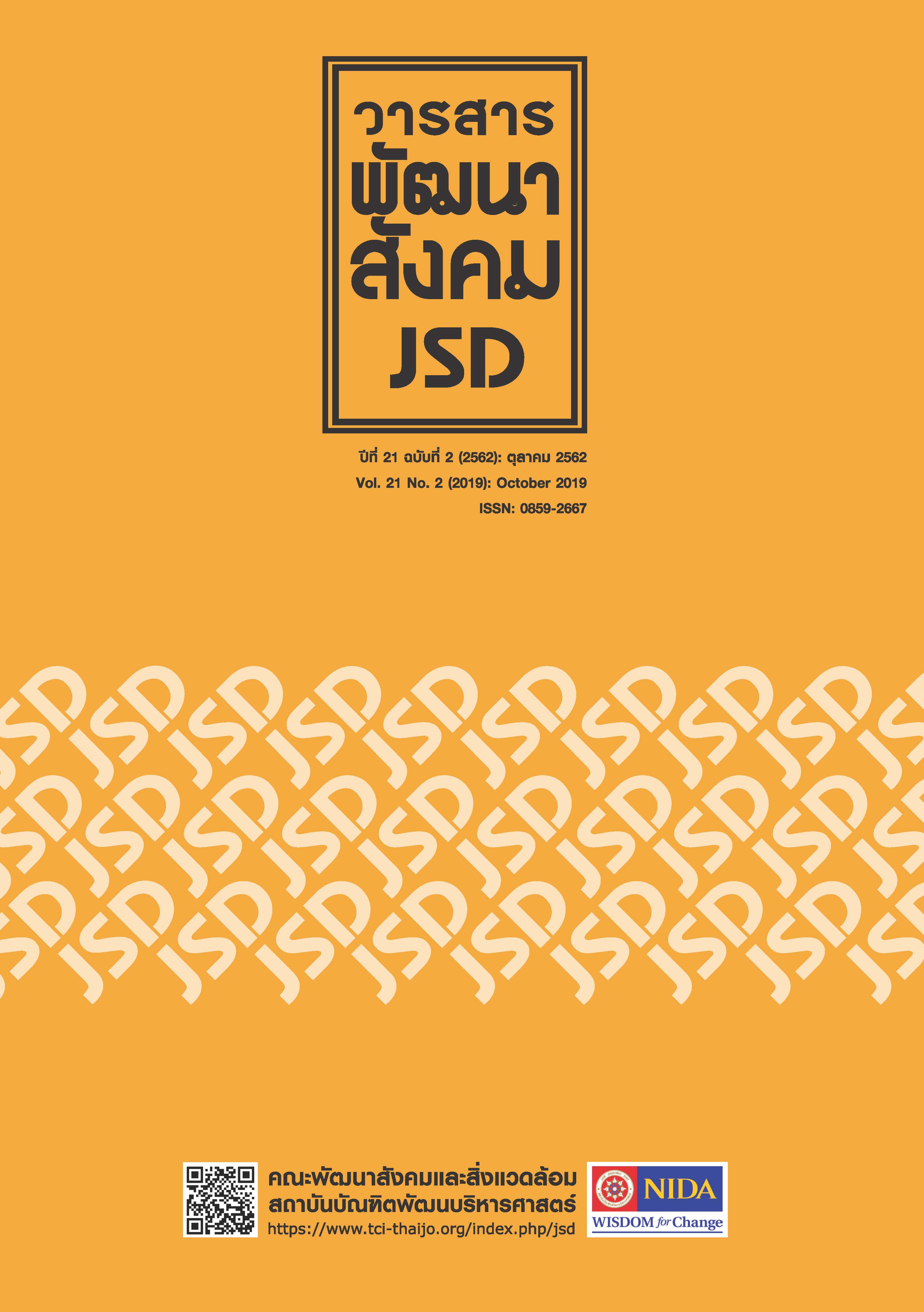Analyzing Thai Student Movements in the Period of Political Turmoil 2006 - 2014
Main Article Content
Abstract
This research aims to study conditions, forms, methods, issues and areas of student
movements from B.E. 2006 to 2014. The study used methods of documentary research and
in-depth interviews for collecting data. The study finds that the important factors leading to
adaptations of the Thai student movement are: (1) the change of political landscape in
people’s politics in the period of political turmoil (2) the advancement of information
technology and the upcoming of new medias (3) the ideological influence of academics on
the student movements and (4) the transformation of public universities into regulated
universities. These conditions lead to a change in the structure of the student movements by
decreasing the role of formal student organizations and increasing the role of independent
and informal student movements, diversifying issues of the movements, and much more
focusing on identity-based politics. Moreover, these conditions also remodel methods of the
student movements’ mobilization into much more qualitative-based method. Likewise, the
funding has changed into using a crowd funding method. The strategic movements are
focused on expressing their agendas in a much more complex symbolic action and apply their
creative thinking to introduce their agendas to the general public for further moving.
Article Details
References
during 1984-1997. Bangkok: Kasetsart University.
Cheangsan, U. (2013). History of Kanmuang Phak Prachachon (people's politics): the ideas
and practices of "political activists" in the present. Bangkok: Thammasat University.
Chomsinsubmun, P. (2011). Student movements in Thailand: the analysis of urban student
movements from 6 October 1976 to 1988. Journal of Politics Administration and Law,
143-169.
Fernández, J. (2014). Facing the Corporate-University: The New Wave of Student Movements in
Europe. Journal for Critical Education Policy Studies, 191-213.
Gill, J., & DeFronzo, J. (2009). A Comparative Framework for the analysis of International Student
Movement. Social Movement Studies, 203-224.
Pansuwan, C. (2019). Fading Student movement? Reshaping the Roles of Student Movements
in the period of Political Turmoil 2004-2015. Bangkok: National Institute of Development
Administration.
Pintoptang, P. (2009). Political Framework Analysis of the Theory of Social Movement.
Chiangmai: Heinrich Boell Stiftung South East Asia.
Shirky, C. (2009). Here Comes Everybody: The Power of Organizing Without Organizations. New
York: Penguin Books.
Tamada, Y. (2008). Democracy, Democratization and De-Democratization in Thailand. Fahdeawgun,
98-139.
Weiland, K. L., Guzman, A., & O’Meara, K. (2013). Politics, Identity, and College Protest:
Then and Now. ABOUT CAMPUS, 2-9.


